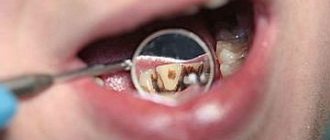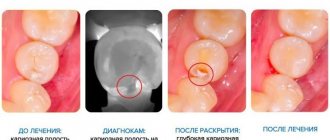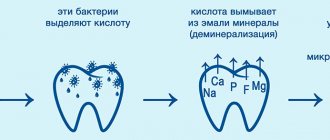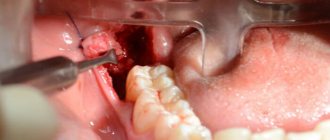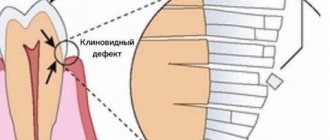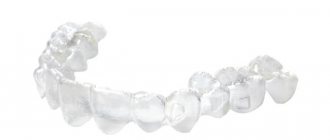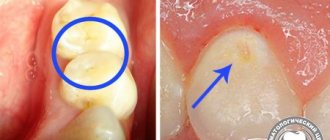Are your teeth too close together? Does this result in the formation of a dental arch shortened by several millimeters? Does this affect facial symmetry? Most likely, we are talking about crowded teeth. The problem lends itself to an effective orthodontic solution. If treatment is approached comprehensively, then in a few months the defect can be removed and you can boast of your beautiful and healthy teeth. What exactly should you pay attention to when treating dental crowding? Experts spoke about this.
Diagnosis of “crowded teeth” – what does it mean?
Dental crowding is a pathology characterized by close positioning and rotation of teeth. Because the teeth are too close together, some of them erupt outside the arch and overlap each other. This anomaly has several degrees of severity:
- mild
- when the crowding of teeth within one jaw is approximately 2-3 mm; - medium
- when it reaches 4-6 mm; - strong
- more than 7 mm.
Crowding can form on one or both jaws, as well as simultaneously in the anterior and lateral regions. In addition, the curvature, if left untreated, worsens over time, which leads to very sad consequences and requires more serious treatment. An interesting fact is that crowding of the lower teeth is several times more common than the upper teeth.
Diagnostics
Diagnosis of crowded teeth includes the following steps:
- visual inspection;
- X-ray diagnostics or orthopantomogram.
Additional diagnostic methods may be used:
- Pon's method - determining the width of the dentition.
- Corkhouse method - measuring the distance between the width of the incisors and the length of the frontal section.
- Snagina's method involves measuring the width of the crown, dental arch, and a line passing along the level of the apexes of the roots of the teeth (apical base).
Main causes of the anomaly
Dental crowding occurs both at the level of the teeth and dentition, and due to improper development of the jaws. In the first case, the causes of its appearance are “eights”, as well as supernumerary teeth, or hyperdentia, and macrodentia - a pathology associated with an increase in the size of one or several teeth. "Eights", or third molars, appear quite late, at 16-27 years of age, and they often do not have enough space in the jaw. Once they erupt, they “pull” other teeth, which can cause crowding. The reasons for the formation of macrodentia and hyperdentia have not been fully studied, but most experts believe that it is a matter of heredity.
Often the cause of crowding is a small jaw - all the teeth simply cannot fit on it. Underdevelopment of the jawbone is influenced by early loss of teeth and lack of replacement, heredity, defects that arose during the formation of the fetus, as well as such bad childhood habits as infantile swallowing, mouth breathing and sucking of irregularly shaped pacifiers or bottles.
One of the bad childhood habits is worth talking about in more detail - this is the mouth type of breathing, which develops due to pathologies of the ENT organs. Outwardly it appears like this: the mouth is slightly open, the upper lip is upturned, the oval of the face is elongated; as it progresses, an adenoid type of face may form.
At first glance, a harmless habit negatively affects the condition of the child in general and the dental system in particular:
- the dentition on the sides narrows;
- little space for permanent teeth;
- the structures of the upper and lower jaw are not fully formed;
- weak tone of the orbicularis oris muscles;
- the dome of the sky becomes higher;
- the configuration of the nasal membrane is disrupted;
- problems with sound pronunciation, articulation;
- overload of the temporomandibular joint and the occurrence of facial muscle pain.
After treatment, such as adenoid resection, the habit of breathing incorrectly often remains. It is necessary to re-teach the child to breathe through the nose, constantly strengthen the orbicularis oris muscle and use an elastic trainer with a vestibular plate (2 times for 30 minutes during the day and at night). Regular exercises restore normal breathing within 3 months.
Anomalies formed at the jaw level are more difficult to correct, especially when it comes to adult patients - in such situations it is often necessary to sacrifice healthy teeth and resort to the help of an oral and maxillofacial surgeon.
How to fix crowded teeth in children
The absence of spaces between the primary canines in a small child is a sure sign that there is not enough space in the jaw. And if even baby teeth can’t fit on it, then molars definitely won’t be able to fit either. Treatment at such a young age is usually not carried out, since it is difficult to force very young children to wear orthodontic appliances, even removable ones. However, it is during this period that one very important thing needs to be done - get rid of bad habits that cause crowding: wean the baby from sucking his finger and pacifier, teach him to swallow correctly and eliminate the cause of mouth breathing.
Treatment of crowding of the upper and lower teeth in the early mixed dentition, that is, starting from 6 years of age, is carried out with the help of plates, as well as trainers, LM-activators, palatal expanders and other functional devices. At this age, it is especially effective to correct the size and position of the jaws, but it is not always necessary to correct crowding during this period. Of course, it will be possible to straighten the dentition, but there is a high probability that they will return to their previous position after the remaining molars erupt. This is why many orthodontists recommend delaying treatment until 11-13 years of age, when the bite is fully formed.
A specialist can prescribe a young patient a set of myogymnastic exercises that normalize the functioning of the oral muscles. To achieve the necessary results, it is enough to devote only 7-10 minutes a day to gymnastics. This way you can avoid not only the development of malocclusion, but also problems with the musculoskeletal system in the child.
Examples of myogymnastic exercises
✔ Button.
Hold a large flat plastic button horizontally between your lips, first for 1 minute, then for 3-5 minutes.
✔ Ruler.
Press the edge of a ruler 8-10 cm long with your lips, while holding it horizontally. Next, increase the load by placing a small object on the ruler.
✔ Air.
With your lips closed, blow air first under the upper and then under the lower lip.
✔ Cheeks.
With your lips closed, puff out your cheeks, and then slowly squeeze out the air with your fists through your clenched lips.
To eliminate anomalies in adolescence, inexpensive designs are used - the price of ceramic braces is quite justified in terms of aesthetics and treatment effectiveness, and the most disciplined children are even fitted with aligners - removable transparent aligners that must be worn at least 22 hours a day. However, even at this stage, specialists are faced with certain difficulties in the form of wisdom teeth that have not yet appeared, so they are faced with a very important question - is it worth carrying out treatment before they erupt or not?
Crowding and wisdom teeth
There are many situations where the eruption of “eights” led to repeated crowding, but this is not at all a reason to refuse early correction of the anomaly. “Wise” teeth are formed by the age of 12, which allows you to see them in the picture and create a treatment plan taking into account the peculiarities of their eruption. Of course, if there is not enough space in the bone, experts prefer not to take risks and remove wisdom teeth in their infancy in order to avoid recurrence of crowding. Waiting for the “eights” to erupt is also not entirely reasonable, since they can appear either very late - around the age of 27, or remain retained. If there is enough space in the bone, wisdom teeth should not be removed - if they erupt correctly, they will be included in the chewing process.
Interesting fact!
Wisdom teeth are one of the rudiments of our body. They rarely participate in the bite, are not always formed and quite often - in about 20 - 25% of cases - remain impacted, that is, they do not erupt. Therefore, if a patient is indicated for tooth extraction due to their crowding, attention should be paid to the “eights” first.
Treatment with braces
Braces can correct crowded teeth in both adulthood and adolescence. There are several options for eliminating crowding orthodontically:
➢
expansion of the dentition;
➢
separation (grinding the contact surfaces of teeth);
➢
distalization, that is, the movement of teeth towards the lateral ones;
➢
extraction (removal).
X-rays, in particular teleroentgenograms and computed tomography, help determine which treatment method is suitable in a particular clinical case. Using them, the specialist determines the volume and condition of the bone tissue, the type of gum, and based on the data obtained, draws up a plan for moving the teeth.
Important!
In order to avoid relapse, after removing braces, it is mandatory to wear a retainer - a thin plate that is attached to the lingual side of the teeth. The period of wearing it is twice as long as the duration of treatment.
Interesting moments that the patient described about the sensations on the aligners
The patient noted in the messenger that his tooth (fang) was moving and he was afraid to remove the aligner along with the fang! The movement of the canine as a result of removing crowding does occur, and as a result, tooth mobility can actually be felt. But since all dental movements during treatment with aligners are planned in advance, and the patient’s teeth are reliably protected in the aligners, all worries were removed.
As I told you earlier, once on a business trip in a restaurant, when he forgot the container and put the aligners next to him on a napkin, the children at the next table laughed that he had taken off his dentures
In fact, aligners can and should be stored in a special container while brushing your teeth or eating
Problems of treating crowded teeth with aligners
There were no problems at all with wearing the aligners. The only thing is that the activator came off once - this was after six months, but this was quickly eliminated and did not affect the course of treatment.
There was a case when a patient went on vacation and did not take his mouthguard retainer with him - his internal retainer came unstuck and the tooth moved back a little, “rotated” as orthodontists say. Now the problem is over.
Tooth extraction for overcrowding
Unfortunately, in some cases, it is not possible to treat crowding with braces without removing teeth. For example, it cannot be avoided when there is not enough space in the jaw for teeth to move. As we found out, the first candidate for removal is a wisdom tooth. However, even its absence does not guarantee the presence of space in the bone. In this case, experts recommend removing “fours” and sometimes “fives”. Removing even two teeth helps to “get” 6 to 8 mm of free space.
Another indication for extraction is supernumerary teeth and macrodentia. If they are removed at an early age, the dentition can take the correct position on its own and will not require orthodontic correction. However, at a later age you cannot do without it.
Prevention
Experts recommend adhering to a number of measures that will allow timely detection of an anomaly:
- Once every six months, visit a dentist for preventive examinations, during which a specialist will be able to detect crowded dentition at an early stage.
- Every six months, undergo professional teeth cleaning, which will reduce the risk of developing various dental diseases.
- From a very early age, parents need to teach their child to go to the dentist and regularly monitor oral hygiene at home.
- Eat right and maintain a healthy lifestyle.
Teeth crowding: treatment without braces
One of the most common alternative methods for treating crowding is separation - minimal grinding of the contact surfaces of the teeth, no more than 0.5 mm. Separation allows you to get up to 4 mm of free space, which in some situations is quite enough for leveling. During grinding, it is very important not to overdo it and not remove too much hard tissue, which can lead to increased sensitivity of the tooth.
In some cases, crowding is eliminated by installing veneers, lumineers and crowns. However, orthopedic structures can only be effective for minor curvatures. Otherwise, in order to install them, you will have to grind down the tooth, which will lead to extremely disastrous consequences.
Important!
Orthodontic structures will help correct the position of the teeth, but not their shape and size - veneers, lumineers or crowns are installed for these purposes.
Duration of treatment
Correcting crowding at the level of teeth and dentition takes from six months to two years, depending on the complexity of the clinical case. It is better to normalize the position and size of the jaws from childhood - with proper treatment, this will take no more than six months. In adults, it will not be possible to correct bone curvatures only with the help of orthodontic treatment - you will have to seek help from surgeons.
Interesting fact!
Typically, orthodontic treatment is performed on both jaws; in rare cases with slight crowding, treatment can be performed on one jaw.
Let's smile together!
I want to tell you about such an important factor in treatment as emotions. If the attending physician, as a rule, always directs emotions in a positive direction, since correcting the patient’s bite is his profession, then for the patient, every moment of improvement in his current condition, or vice versa, every small anxious moment is a surge of emotions. That's right, because the patient begins a new life with a beautiful smile, and for him in this new life there is already a place for openness and positive impressions.
During treatment with aligners, as agreed, the patient very actively communicated with me using messengers.
Is it possible to leave everything as is?
Firstly, crowded teeth are very difficult to clean, so caries often form in hard-to-reach places. Very often, its development proceeds unnoticed even by specialists, as a result of which the disease is detected already at the stage of acute inflammation, when not only the tooth is affected, but also the surrounding hard and soft tissues. It is not always possible to save such a tooth.
Secondly, crowded teeth can lead to malocclusion, wear, exposed roots, gum disease, which can result in tooth loss. Their loss (even if only one tooth is missing), as is known, complicates the process of chewing food, leads to disruption of the temporomandibular joint, and then the entire body. Therefore, we advise you not to delay orthodontic treatment and contact a specialist as soon as possible.
Why is it important to fix the problem in time?
Any orthodontic irregularities are potential dental problems in the future.
Improper closure leads to abrasion of the enamel on the cutting edge of the teeth (all or only on one side if the bite is asymmetrical).
When teeth are crowded, it is more difficult to remove plaque - this causes caries, and with insufficient care - gum disease.
If prosthetics are required in the future, placing an implant may not be possible or there may even be restrictions on placing a bridge. So first you will need to correct the position of the remaining teeth.
With severe crowding of teeth and a noticeable narrowing of the jaw, aesthetic problems are added: teeth look unsightly, asymmetry of the lower part of the face may occur.
Treatment by an orthodontist is not an aesthetic procedure. A beautiful smile is what you get as a bonus; the main acquisition is a correct bite and maintaining dental health in the future.
